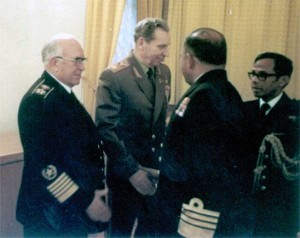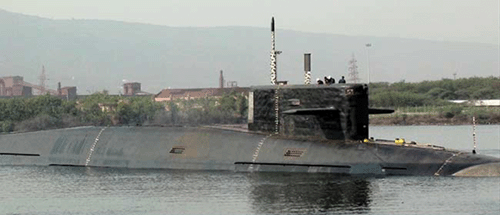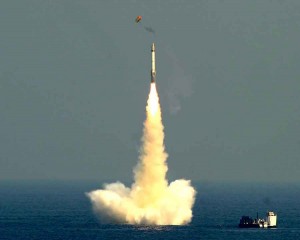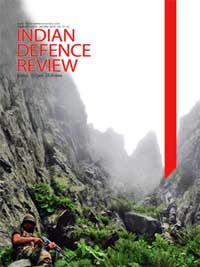The first major challenge was to reorient the s/m design team from a conventional single hull design framework to a double hull nuclear powered s/m concept. Besides, having to put aside all the design normative and processes learnt at the Professor Gabler’s s/m Design Institute in Lubeck, it required a complete mindset change. Next, came the enormous challenge of innovating, the unique fuel package required for a compact s/m reactor. The Indian establishment had vast experience in developing the nuclear power programme under very stringent international technology denial regime. At that point of time, we also faced serious obstacles in obtaining enriched uranium, the universally accepted staple feed for the s/m reactors, in the quantum required to sustain a nuclear s/m flotilla.
In respect of nuclear propulsion, the Indian Navy (IN) followed the traditional evolutionary global path…
Due to severe constraints on the accessibility to authentic information, there are many misconceptions afloat on Advanced Technology Vessel (ATV), the Indian nuclear submarine (s/m) programme. Most defence analysts and writers have had to rely on interpolation/extrapolation of informal personal interviews of retired officials. Hopefully, with the commissioning of INS Arihant in March 2016, the cobweb will be removed.
Recent writings of Yogesh Yadav and Balaz Szalontoi have unearthed some authentic documents from Russian and Hungarian national archives which have provided fresh insight into the subject. After INS Arihant was launched and the reactor became critical – Dr Anil Anand also released some historical facts linked to the compact nuclear reactor project in which he had a lead role to play
An attempt is being made here to put together – as realistic a picture as possible and try to correct some of the misconceptions that have crept into the discourse due to secrecy. Some important milestones crossed in the process are also recalled briefly.
The Indian Navy’s Preparatory Exercise
In respect of nuclear propulsion, the Indian Navy (IN) followed the traditional evolutionary global path. The prime responsibility of induction of marine engineering technology into the IN is that of the Directorate of Marine Engineering (DME) at NHQ. Commodore Tandon, the DME at that time, had in 1968, initiated a feasibility study project on marinised gas-turbine at the Gas Turbine Research Establishment (GTRE) in Bengaluru. This was before the acquisition of the Petya class of ships from USSR. Thereafter, most of the warships designed and built in India (including INS Vikrant under construction at Cochin Shipyard Ltd) and those acquired from Russia have gas turbines as their primary propulsion system. A similar exercise on nuclear propulsion was initiated around the same time.
Prime Minister (PM) Nehru never locked the door on keeping the option open for India to weaponise the nuclear genii under national security compulsions…
The spadework for the induction of nuclear propulsion was commenced long before the date normally ascribed to it. Not sufficient credit is given to the foresight of the naval leadership. Since the early 1950s, design engineering was part of the advanced engineering courses undergone by selected engineer officers at Royal Naval Engineering College at Plymouth and Cranfield Institute of Technology in UK. Similarly, naval architects did their post graduation at Royal Naval College at Bath, Greenwich in UK and the Grechko Naval Academy at Leningrad in USSR. Ship, submarine and its associated machinery design formed part of their studies.
In the mid-1960s, naval engineers were sent to BARC institution for post graduate studies in nuclear technology. Additionally, in the 1980s, as part of the HDW s/m contract – a multi-disciplinary design team was also deputed to Professor Gabler’s Submarine Design Institute at Kiel and Lubeck in Germany. Some of those officers, who graduated from these institutions, were at the helm of the design teams at GTRE, Defence Machinery Development Establishment (DMDE), Ship Building Centre (SBC), Submarine Design Group (SDG), Director General Naval Design (DGND), Proto-type Training Centre (PTC), Ship Building Centre (SBC), Machinery Test Centre (MTC) and Advanced Technology Vessel (ATV) HQs.
In 1968, after completing the nuclear technology course in BARC, Lt Gurmith Singh, (who continued with the ATV project till, his retirement from the Navy as Rear Admiral) was assigned the task of undertaking a joint feasibility study on nuclear propulsion. Thereafter, several project reports were rendered by the joint BARC-cum-Naval teams code named 932. The plethora of project report indicates the shaky ground on which we were operating at the time. The nuclear propulsion project took off in earnest in January 1976, after the approval of the Cabinet Committee for Political Affairs. Vice Admiral Tandon, the then Chief of Material, who along with the DME, was defending the case, had made it abundantly clear that at least a four-year lead time would need to be catered for – between the design/development of a nuclear plant and the s/m design.
Evidence now shows that even Prime Minister (PM) Nehru never locked the door on keeping the option open for India to weaponise the nuclear genii under national security compulsions. This policy was sustained by most of the PMs who followed. Dr Homi Bhabha, all along, had been advocating to PM Nehru that nuclear technology must be nurtured for such an eventuality. LK Jha and PN Haksar shared similar views.
The real impetus to the project came after the Soviet Navy demonstrated to PM Indira Gandhi, the capability of the nuclear s/m…
Indira Gandhi’s Strategic Initiative
The real impetus to the project came after the Soviet Navy demonstrated to PM Indira Gandhi, the capability of the nuclear s/m, in deterring the attempts of the US Navy (USN) to intervene in the Bay of Bengal, during the 1971 War. In February 1972, Grechko, the Soviet Defence Minister, is reported to have brought to the notice of Ambassador D.P Dhar and General Manekshaw as to how a Soviet nuclear s/m stalked the USN’s nuclear powered carrier Enterprise in December 1971. Thereafter, Indira Gandhi gave unstinted support to the project. As a matter of fact, she became the driving force behind it. In this context, the suggestion that the Soviets offered us nuclear s/m assistance, even before the Indo-Soviet Strategic Partnership Agreement was signed and Germany conceded to signing NPT in 1970, is inconceivable.
The programme was, thereafter, initiated on three parallel tracks – the nuclear propulsion, the s/m as a weapons platform and the Submarine Launched Ballistic Missile (SLBM). At the stage of R&D for a nuclear propulsion package, no specific end use for the platform was formally identified. At the working level, it was understood that the ultimate goal would be nuclear deterrence or nuclear-powered ballistic missile submarines (SSBNs). Both the Union of Soviet Socialist Republics and the People’s Republic of China had adopted the evolutionary learning curve route – i.e. conventional attack s/m (SS) > Cruise missile armed conventional s/m (SSG) > nuclear s/m with cruise missile (SSGN) > nuclear attack s/m (SSN) and finally to ballistic missile armed nuclear s/m (SSBN). Formally, India by compulsion also had to follow a similar route, especially, to evade the strict technology denial regime and the linked sanctions that would have been invoked otherwise.
A great deal has been said about the former Chief of Naval Staff Admiral Pereira’s objections to acquiring nuclear s/m. In reality, his objections were not based on any pacifist considerations nor was it due to any lack of strategic vision.
He was a seasoned sailor and a very well respected and pragmatic CNS who was concerned about:
- The naval budget not being able to support and sustain a nuclear s/m programme.
- The s/m arm was still in its infancy and the support structure was struggling to keep afloat.
- The fear that this would get derailed.
- With the historic naval experience behind him, he couldn’t be expected to, believe that henceforth, a sustained separate budget support, for even such a national strategic asset, would be forthcoming. The jury is still out on this specific issue.
The Indian establishment had vast experience in developing the nuclear power programme under very stringent international technology denial regime…
Marshal Ogarkov Principle
In April 1981, during Chief of General Staff, the Marshal of the Soviet Union, Ogarkov’s visit to India – he formally enunciated the so called Ogarkov Principle, that laid down the parameters of the assistance feasible. Their insistence on compliance with the safeguard clause prior to any agreement on Transfer of Technology (ToT) for the reactors was not a surprise but was not acceptable to India. In July 1981, Dr Raja Ramanna’s delegation was taken to Murmansk and shown an SSGN.
After extensive negotiations, the Agreement, was concluded in April 1982 and can be broadly categorised under following heads. They conform to the Nuclear Proliferation Treaty (NPT) and Missile Technology Control Regime (MTCR). All subsequent Soviet/Russian cooperation on the nuclear s/m programme flows out of that umbrella Agreement. The issue of detail design assistance on the reactor was left to be considered separately. The ambiguity over nuclear s/m with cruise missiles SSGN vs SSBN was maintained. The likely fallout from the Agreement has also been listed for illustrative purposes:
Lease Agreement
- The Lease Agreement for the boat, initially designated S1 and subsequently christened ‘Chakra’, was concluded in December 1986. Finally, it was transferred to the IN in September 1987 and returned after expiry of the lease in December 1990.The initial objective of the exercise was to provide:
i. SSGN operation and maintenance experience to the IN before induction of its own s/m.
ii. Physical access to the s/m and its reactor to the designers to familiarise them with the layout and space constraints.
- The replacement SSGN of Akula class, christened Chakra II, was leased out from 2012 onwards.
- Another SSGN is expected to be delivered this year.
- Possibly – the acquisition of the third s/m is also being seriously contemplated.
i. To begin with, training of two sets of crew for operations and maintenance, inclusive of work up.
ii. Assistance in setting up operation & s/m building infrastructure.
iii. Design and development assistance for the ATV programme:
- The first indigenous boat was designated as S2 – which has now been named Arihant. Her reactor achieved criticality on 10 August 2013. She has now successfully completed her extensive sea trials, except for a series of planned live firing trials of SLBM from her operating depth. That is scheduled for completion well in time before commissioning in March.
- S3, the next in line, designated as Aridaman, is being fitted out in SBC.
- S5 onwards will be bigger boats to accommodate the long range SLBMs K05 – likely to have higher powered reactor. Usage of higher enriched uranium fuel will enhance the power available per unit volume and lead to longer time between refuelling.
- SSNs are planned, thereafter.

COGS Marshal Ogarkov, Soviet Navy Chief, Admiral of the Fleet Gorashkov and CNS Admiral Dowson with the author
Following the umbrella Agreement – a professional soviet delegation led by Belausev, the Soviet Minister of Shipbuilding, came in December 1983, for extensive survey and assessment of shipbuilding and heavy industry capability in India. All the prospective Public and Private sector industries identified by India were considered.
Advanced Technlogy Vessel Programme Launched
The ATV programme was formally launched in April 1984. The Management structure replicated the Integrated Guided Missile Project. The Apex Board was chaired by the PM/RM and members consisted of SA to RM, CNS, Secretary DAE, Finance and DGATV with PDATV (Technical Coordination) as the Secretary. At the next level was the Programme Management Board – chaired by SA to RM.
The third level was the Technical Management Board chaired by the DGATV and attended by heads of all Work Centres. Finally, there was the Joint Indo-Soviet Working Group (JISWOG) – alternately chaired by DG ATV and the Soviet Deputy Minister of Ship Building, Rezinov. The work centres consisted of DMDE, PTC, SBC, MTC, Bharat Heavy Engineering Ltd, Larsen & Toubro Ltd. and Defence Research and Development Laboratory. By end 1980s, most of these institutions were sanctioned and running.









The requirement of 6 SSN’s in 1990’s is clearly mentioned in the book Foxtrot to Arihant – The Story of Indian Navy’s Submarine Arm. The initial BARC-Navy engagement was for teaching navy the basics of atom is also referred in the book. There is a mention Swedish Submarine deal which did not go through. ATV was never conceived as single hull.
First nuclear submarine was taken back by Russians bcos of American pressure n not completion of lease contract.